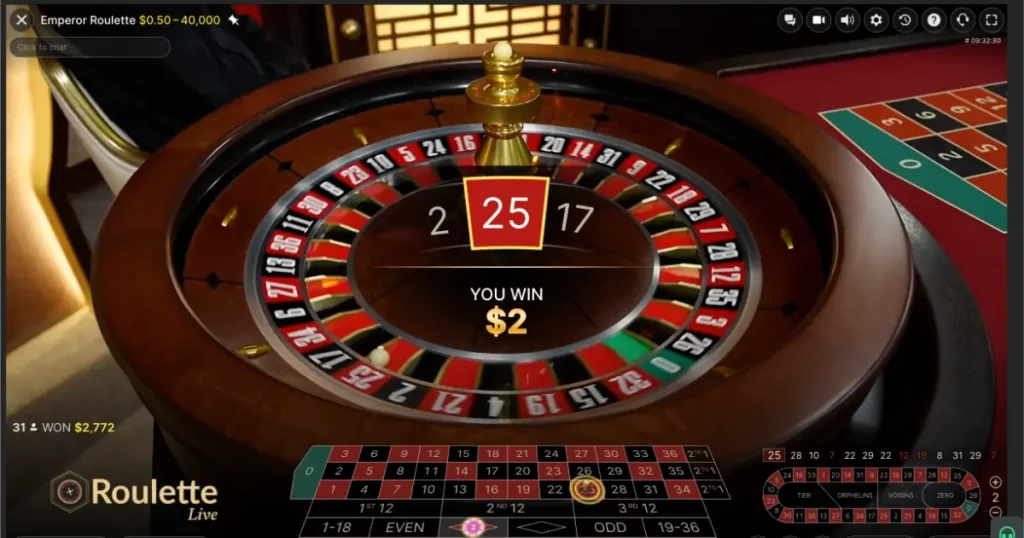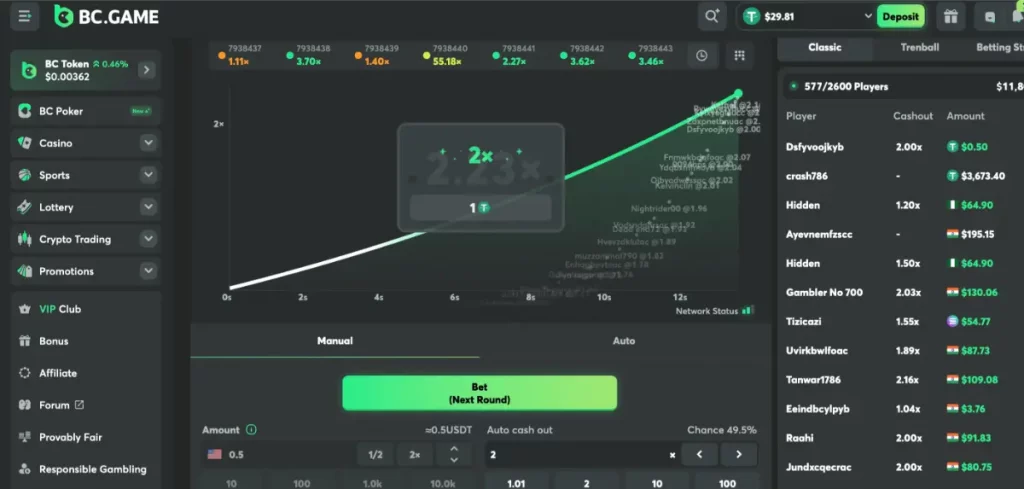
D’Alembert strategy: A balanced approach to casino gambling?
If you’ve ever felt torn between the kamikaze style of Martingale and the slow-burn approach of Oscar’s Grind, let me introduce you to the D’Alembert system.
In this article, I’ll explain the D’Alembert system in practical, real-world terms. I’ll also share my personal test session for that oh-so-important “hands-on” perspective.
Let’s see if this classic system has enough nuance and staying power to give you the structured gameplay you’re looking for.
🔑 Key Takeaways
- D’Alembert is a milder progression system compared to Martingale.
- It works best with even-money bets like red/black in roulette or banker/player in baccarat.
- You increase your bet by one unit after every loss and decrease your bet by one unit after every win.
- The system’s main appeal is limiting drastic bankroll swings. However, it can still escalate during tough losing streaks.
- Practicing solid bankroll management and setting clear stop points are essential.
What is the D’Alembert system?
The D’Alembert system was named after an 18th-century mathematician who was fascinated by the concept of equilibrium. The original idea, much simplified for casino betting, goes something like this: outcomes in fair bets tend to “balance out” over time.
Still, the theory behind it is charming: less all-or-nothing than Martingale but still progressive enough to recoup losses bit by bit if you string together a decent winning streak.
Core features:
- Designed for near 50/50 bets: Perfect for even-money wagers like red/black in roulette, player/banker in baccarat, or pass/don’t pass in craps.
- Incremental progression: Increase bet size by one “unit” after each loss, and decrease by one unit after each win.
- Focuses on smaller fluctuations: Avoids the dramatic doubling of Martingale.
- Often used in roulette: D’Alembert is a top pick for red/black enthusiasts, in particular.
How does D’Alembert work?
At its heart, D’Alembert is about small, controlled bet increments and decrements. Let’s see the actual steps with an example.
- Choose your base unit
Pick a “unit” you’re comfortable risking like $1, $2, or $5. This choice is critical because it sets the stage for your entire session. - Start with one unit
Place your first bet with that single unit. For instance, if your base is $2, your initial wager is $2. - On a Loss, increase by one unit
If you lose, you bump the wager up by one unit. From $2, you’d go to $4 on your next bet. - On a Win, decrease by one unit
If you win, you slice the wager by one unit. So if you were at $6 and won, you’d drop down to $4 for your next bet. - Rinse and repeat
You keep cycling through the sequence – one unit added after losses, one unit subtracted after wins. - End goal
D’Alembert theoretically aims to have your wins and losses balance out, letting you (ideally) collect small profits over time.
Important: If your current bet size is at one unit and you win, you stay at one unit. You can’t go lower than the base bet. That’s the risk-limiting safety net.
My test
I decided to test the D’Alembert system in Emperor Roulette by Evolution Gaming (red/black), starting with a $0.50 base bet and a modest bankroll of $5. My plan was to run 10–12 rounds or so and see where I landed.
Below is a short table summarizing my bets and outcomes:
| Bet # | Bet Amount | Result | Profit/Loss | Running Balance |
|---|---|---|---|---|
| 1 | $0.50 | Win | +$0.50 | $5.50 |
| 2 | $0.50 | Loss | -$0.50 | $5.00 |
| 3 | $1.00 | Loss | -$1.00 | $4.00 |
| 4 | $1.50 | Loss | -$1.50 | $2.50 |
| 5 | $2.00 | Win | +$2.00 | $4.50 |
| 6 | $1.50 | Win | +$1.50 | $6.00 |
| 7 | $1.00 | Win | +$1.00 | $7.00 |
| 8 | $0.50 | Loss | -$0.50 | $6.50 |
| 9 | $1.00 | Win | +$1.00 | $7.50 |
| 10 | $0.50 | Loss | -$0.50 | $7.00 |
Although I finished ahead, the fifth bet was a make-or-break moment – if red hadn’t hit, my bankroll would’ve been gone.
D’Alembert progression: Pros and cons
Like any betting strategy, the D’Alembert method carries both perks and pitfalls. Let’s break it down:
I’ll start with the benefits:
✅ Risk is more controlled than Martingale’s strategy.
✅ It’s easy to follow.
✅ Manageable bankroll requirements.
✅ Perfect balance between risk and reward.
Yet, D’Alambert’s strategy is less than ideal:
❌ Extended losing streaks are still painful.
❌ Small win margins.
❌ Pace is not quick enough.
5 tips to make the most of the D’Alembert system
It doesn’t matter if you stick with Paroli, or you’re testing the waters with D’Alambert – there are some tips which are must-haves.
Here they are:
- Pick your base unit wisely: Don’t go all-in with a large base unit if your bankroll can’t handle it. The system seems safe, but extended losses can still chew away your stack.
- Use Stop-Loss and Win Goals: One hallmark of disciplined gambling is knowing when to step away. If you double your starting bankroll or you lose, say, 50% of it, consider that your call to exit.
- Don’t assume “Loss = imminent Win”: The gambler’s fallacy is real. D’Alembert is rooted in the (faulty) notion that losses make wins “due.” The real world doesn’t quite work like that – every spin is still independent. Be aware that “catching up” might require more patience than you’d expect.
- Limit your time: Consider shorter, more focused sessions. I find a 30–60-minute window is enough to get in some table action without letting fatigue lead me into sloppy bets.
- Combine with basic strategy for skill games: In blackjack or video poker, do not neglect your basic strategy just because you’re using a betting system. The better your general gameplay, the less you’ll rely on luck alone.
Applying D’Alembert to casino games
While D’Alembert works with many even-money bets, certain games are best suited for it.
Below, I’ll show you how I typically use D’Alembert in some of the most popular games.
Let’s have a look.
D’Alembert in Roulette

Roulette is a classic match for D’Alembert. You simply place your bets on red/black, odd/even, or 1–18/19–36, then follow the system’s small step-ups and step-downs in your wager.
Because each spin resolves quickly, you’ll get a consistent rhythm of bets, which makes D’Alembert feel surprisingly smooth.
One caveat: European roulette (single zero) is friendlier than American (double zero).
D’Alembert in Baccarat

The simplicity of baccarat is perfect for D’Alembert. Either choose Banker or Player bets (Banker has a slight edge, but keep that 5% commission in mind).
If you’re the type who enjoys rapid-fire hands, D’Alembert’s measured approach can help avoid hasty, large-scale wagers after each unlucky streak.
I’ve found it takes the heat off more than something like Martingale, which would have you doubling your bet in the same scenario.
D’Alembert in Blackjack
While blackjack isn’t purely a 50/50 game thanks to splits, doubles, and strategic decisions, the D’Alembert system can still work if you stick to the basic strategy for your playing decisions.
If you’re consistent with your hits and stands, the bet increments after each win or loss will feel less random.
Just don’t let a high bet size tempt you into ignoring the mathematically correct plays.
D’Alembert in Crash games

For fast-paced gamblers, Crash games can also work well with D’Alembert if you select a modest multiplier. The key is to treat each round as close to an even bet, like 2.00x.
When you lose, bump your bet by one unit; when you win, go back down.
That’s why D’Alembert shines in long crypto casino races, like monthly wagering competitions, where gradual, controlled bets generate steady points over time.
Comparing D’Alambert to other strategies
| System | Risk Level | Bet Adjustment | Key Advantage |
| D’Alembert | Moderate | ±1 unit | Smaller swings, simpler flow |
| Martingale | High | Double on loss | Quick recoup of losses |
| Fibonacci | Moderate/High | Next Fibonacci # | Natural progression mechanics |
| Paroli | Low/Moderate | Double on win | Riding winning streaks |
| 1-3-2-6 | Low/Moderate | Preset steps on wins | Controlled risk, big bursts |
Final words
So, is the D’Alembert betting strategy right for you? If you’re craving a more balanced ride that won’t empty your wallet on a single bad streak, this system may fit the bill. It’s simple to learn, it’s less nerve-wracking than Martingale, and it can be applied to a variety of near-50/50 bets.
But remember, no system can override the house edge. The best you can do is manage risk and have fun.
My advice? Give it a test run with a small bankroll. Stay mindful, manage your funds carefully, and set a firm exit plan. If it clicks with your style, you’ll enjoy a calmer, more predictable betting experience. If not, you’ve at least tried one of the classics.








